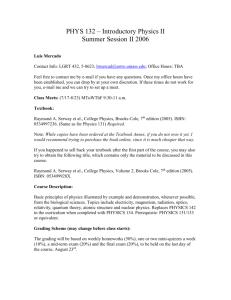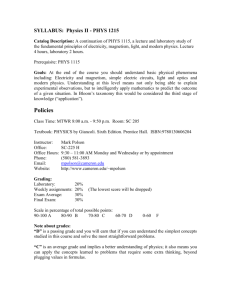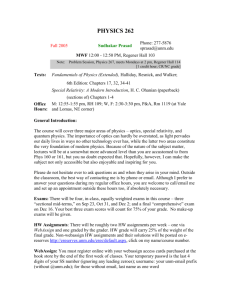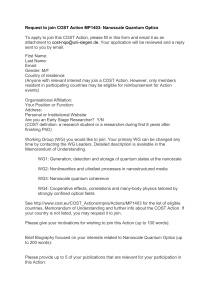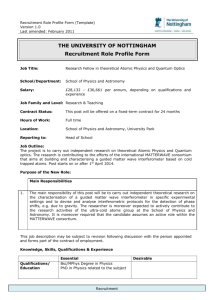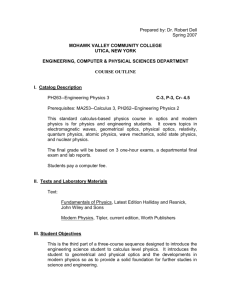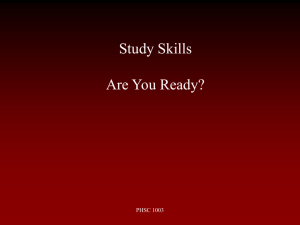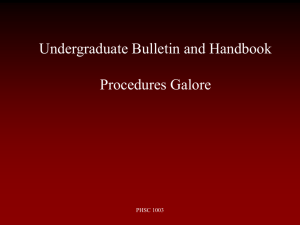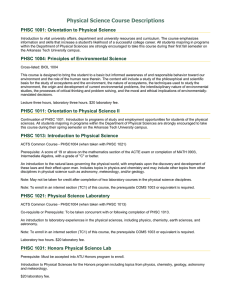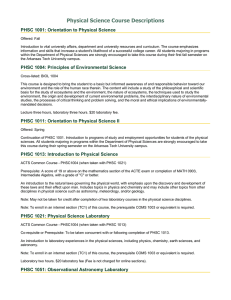TC3 General Physics II Syllabus
advertisement
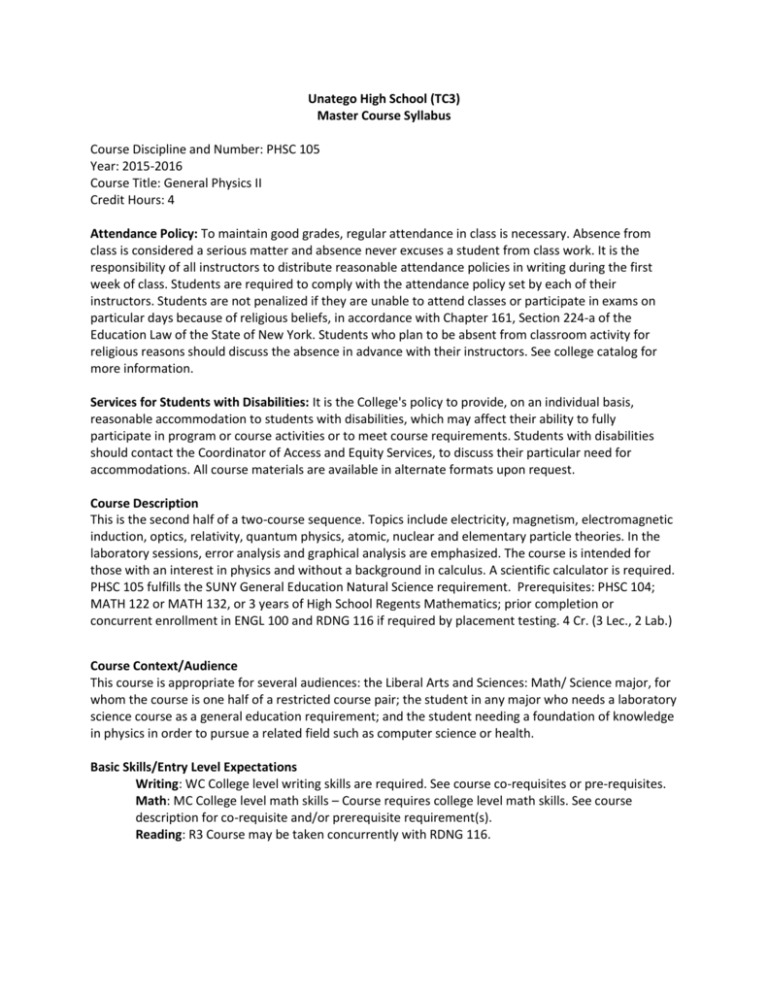
Unatego High School (TC3) Master Course Syllabus Course Discipline and Number: PHSC 105 Year: 2015-2016 Course Title: General Physics II Credit Hours: 4 Attendance Policy: To maintain good grades, regular attendance in class is necessary. Absence from class is considered a serious matter and absence never excuses a student from class work. It is the responsibility of all instructors to distribute reasonable attendance policies in writing during the first week of class. Students are required to comply with the attendance policy set by each of their instructors. Students are not penalized if they are unable to attend classes or participate in exams on particular days because of religious beliefs, in accordance with Chapter 161, Section 224-a of the Education Law of the State of New York. Students who plan to be absent from classroom activity for religious reasons should discuss the absence in advance with their instructors. See college catalog for more information. Services for Students with Disabilities: It is the College's policy to provide, on an individual basis, reasonable accommodation to students with disabilities, which may affect their ability to fully participate in program or course activities or to meet course requirements. Students with disabilities should contact the Coordinator of Access and Equity Services, to discuss their particular need for accommodations. All course materials are available in alternate formats upon request. Course Description This is the second half of a two-course sequence. Topics include electricity, magnetism, electromagnetic induction, optics, relativity, quantum physics, atomic, nuclear and elementary particle theories. In the laboratory sessions, error analysis and graphical analysis are emphasized. The course is intended for those with an interest in physics and without a background in calculus. A scientific calculator is required. PHSC 105 fulfills the SUNY General Education Natural Science requirement. Prerequisites: PHSC 104; MATH 122 or MATH 132, or 3 years of High School Regents Mathematics; prior completion or concurrent enrollment in ENGL 100 and RDNG 116 if required by placement testing. 4 Cr. (3 Lec., 2 Lab.) Course Context/Audience This course is appropriate for several audiences: the Liberal Arts and Sciences: Math/ Science major, for whom the course is one half of a restricted course pair; the student in any major who needs a laboratory science course as a general education requirement; and the student needing a foundation of knowledge in physics in order to pursue a related field such as computer science or health. Basic Skills/Entry Level Expectations Writing: WC College level writing skills are required. See course co-requisites or pre-requisites. Math: MC College level math skills – Course requires college level math skills. See course description for co-requisite and/or prerequisite requirement(s). Reading: R3 Course may be taken concurrently with RDNG 116. Course Goals 1. The student will understand the basic concepts associated with electricity, magnetism, electromagnetic induction, optics, relativity, quantum physics, atomic, nuclear and elementary particle theories. 2. The student will be able to do problems, employing algebra and trigonometry techniques along with laws of physics, in the topics mentioned above. 3. The student will be able to build a lab experiment, make measurements to test the theories studied in class, and analyze the data thus obtained using error and graphical analysis. Course Objectives/Topics Objective/Topic Students will be able to demonstrate an understanding and the ability to use a scientific measurement system. % Course 3% Students will understand the laws of physics regarding electricity, magnetism and electromagnetic radiation and be able to solve algebra-level problems in these areas. 42% Students will understand the laws of physics regarding geometric optics and wave optics and be able to solve algebra-level problems in these areas. 20% Students will understand the laws of physics regarding relativity, quantum physics, atomic structure, nuclear structure, and elementary particles and be able to solve algebra-level problems in these areas. 22% Given a reasonable amount of guidance, students will assemble lab equipment, perform experiments, correctly use measuring tools to obtain data, interpret the results using graphical or error analysis. Each experiment will be a test of one of the theories presented in the lecture part of the class. 13% General Education Goals - Critical Thinking & Social/Global Awareness CRITICAL THINKING OUTCOMES HOW DOES THE COURSE ADDRESS THE OUTCOMES (Include required or recommended instructional resources, strategies, learning activities, assignments, etc., that must or could be used to address the goal/outcomes) Students will be able to • develop meaningful questions to address problems or issues. • gather, interpret, and evaluate relevant sources of information. • reach informed conclusions and solutions. • consider analytically the viewpoints of self and others. SOCIAL/GLOBAL AWARENESS OUTCOMES • Students will begin to understand how their lives are shaped by the complex world in which they live. • Students will understand that their actions have social, economic and environmental consequences. Because of the mathematical nature of the course, students need to develop meaningful questions to design algorithms that solve the problems based on data they gather from laboratory work, textbooks and the internet. Laboratory analysis and homework problems involve complex algorithms that are a slight variation on those presented in class. Cooperation amongst students is imperative to succeed in science. This course encourages students to work in teams during labs. Encourage students to share solutions and strategies during homework preparation and lab circuit design and implementation. HOW DOES THE COURSE ADDRESS THE OUTCOMES (Include required or recommended instructional resources, strategies, learning activities, assignments, etc., that must or could be used to address the goal/outcomes) As topics in physics are presented, historical context is usually included. This allows students to realize that science is an ongoing process, and contributors to this process come from all over the world. The economic and social stimuli that brought about various scientific breakthroughs are also considered in a global context. Instructional Methods Traditional lecture works very well in presenting the concepts and techniques of the course. Discussion of homework problems in each class, with some time set aside for students to try new problems, is also effective. In the lab sessions, it helps to spend five to twenty minutes at the beginning to explain how the experiment to be performed that day will demonstrate some theory that was already presented in lecture. If students work with partners in lab, they seem to learn quite a bit from each other. The most effective sequence of topics is that given by the chapter order in the textbook listed below. Computer software, such as Interactive Physics, and calculators provide a wonderful reinforcement of topics studied in lecture or lab. Methods of Assessment/Evaluation Method Frequent quizzes Lab Reports and assignments Final Exam (must be comprehensive) Lab Final Exam % Course Grade 30-50% 15-30% 15-30% 8-16% Text(s) College Physics, Raymond A. Serway, Jerry S. Faughn, Chris Vuille, and Charles A Bennett, 9th Edition, © 2012 Cengage Learning Computer software, such as Interactive Physics, and calculators provide a wonderful reinforcement of topics studied in lecture or lab., Latest Edition, © 2006 Bibliography Conceptual Physics, 7th ed., by Paul Hewitt (Harper Collins College Publishers, © 1993). The Cartoon Guide to Physics, by Larry Gonick and Art Huffman (Harper Perennial, © 1990). Encyclopedia of Physics, 3rd ed., edited by Lerner and Trigg, (Wiley, © 2005) Other Learning Resources Mechanical Universe and Beyond, video series Interactive Physics, installed on computers in the library classroom. Graphing Calculators
